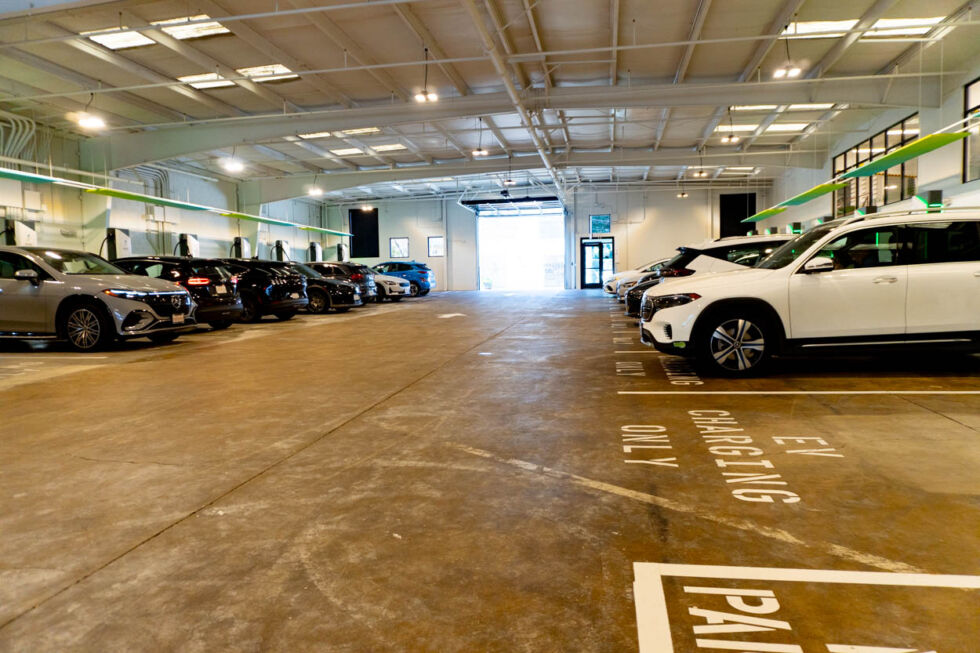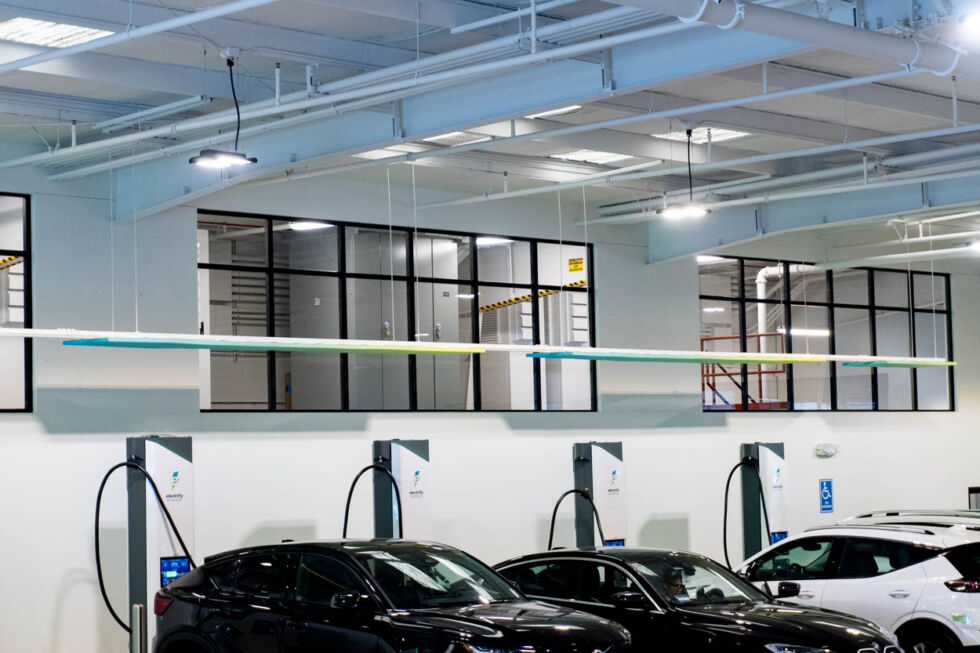
The Bay Bridge, as usual, was a mess. The link between San Francisco and Oakland, even on the weekends, can be a source of gridlock-induced frustration. After navigating through the toll plaza and the tunnel on Yerba Buena Island (the sort of halfway point between the two cities), I checked my state of charge and made my way to Electrify America's flagship location in the City by the Bay (which is frankly both cities, but San Francisco has a better PR team).
The past few months, electric vehicles have been making headlines. But not in a good way. News of major US automakers General Motors and Ford reducing their output goals has people screaming that electric vehicles are doomed (they're not). GM is still wading through manufacturing issues, leading to a reduction in its ability to build EVs on its Ultium platform. Plus, there's the charging infrastructure, which, as detailed by just about every media outlet, is not great. Reliability issues are real and well-documented, and that's horrible for EV adoption. It's also bad for automakers and, more importantly, it's terrible for the planet.
So it's comforting to get some good news: Electrify America has opened an indoor location in San Francisco, and it just might be the future of charging.
Like other charging networks, Electrify America has had issues. Its relatively large footprint in the DC fast-charging realm also means it's the biggest target for non-Tesla EV owners who have had issues with charging stations. For any of these companies to reap the financial rewards of the Inflation Reduction Act for charging, they need to increase their charging station uptime to 97 percent.
Advertisement
I thought about this as I pulled into the Electrify America flagship station at 928 Harrison St. in San Francisco. It's an indoor facility with 20 DC fast-charging stations capable of delivering electricity at up to 350 kW. One is also a 50 kW CHAdeMO station for Leaf owners, or perhaps the occasional Mitsubishi Outlander PHEV. On my way to the station, the Electrify America app told me that 10 of the 20 stations were available. I liked my chances of securing a spot for my Hyundai Kona Electric.
At the station, I was immediately greeted by a friendly employee wearing a security outfit. She played the part of welcoming friend and low-level traffic enforcer, asking me to stop my vehicle while a BMW i4 backed into a spot. From the time I had checked the app to when I arrived, five additional stations had been filled; two were taken by BMWs that I followed into the building. I pulled into the first spot, which for some reason had the display opposite of the parking spot (all the other stations have displays that face the vehicles as they pull in). I jumped out and realized I had parked in the one CHAdeMO spot. Worried that a Nissan Leaf would arrive at any moment, I moved to another spot.
In the 45 minutes I was there, this was the only time anyone in the facility moved stations. Owners of EVs are well-acquainted with the station shuffle. You pull up to a seemingly working unit only to find out it won't connect to the vehicle, doesn't accept payment, or is just out of order due to cosmic forces none of us could understand. So you move your vehicle to another station, and then maybe another, until you finally can get some electricity flowing into your vehicle. That didn't happen here.

All the stations at the facility were up and running, and no hands were thrown up in frustration. No one walked over to another driver to say that a certain piece of hardware was not working. No cables were unplugged from vehicles and then plugged back in after 10 seconds, like someone troubleshooting a giant Linksys router. Everything just seemed to work.
Plus, the facility is clean and inviting. It has very comfortable chairs, decorations pulled from a boutique hotel lobby, and two restrooms. There are two vending machines with various snacks and beverages. I paid $4 for a cold Dunkin Donuts mocha beverage and immediately regretted that decision.
Disgusting liquids aside, both lounges on either side of the driveway into the building were cozy. One even had a small conference room—presumably for meetings with your EV gang of mid-level managers.
The location of the vehicles was well-lit, and on the second level, you could see the inner workings of the facility through the glass. I had hoped to see busy workers running from box to box, managing the massive amount of electricity surging into the location. Nope. nothing. No one even seemed to notice this area. After months or years of struggling with charging, finding a station that just works, with enough chargers for all comers, seemed a bit foreign, and the last thing anyone cared about was why.

More importantly, the location felt safe. It's open 24 hours a day, seven days a week, and it's staffed the entire time. Nighttime trips in a gas vehicle naturally feel safer because stations are well-lit, and other people and staff are around. Nighttime trips in an EV can be frightening when you realize that the only charging station for miles is in a barely lit corner of a shopping center that shuts down at 8 pm.
AdvertisementGenerally, those locations are used late at night out of necessity. San Francisco resident Matthew Villeneuve told me that to supplement at-home charging from a 120 V outlet, he will regularly head out to a local supermarket. "I charge at midnight; otherwise, I might show up to Safeway and wait an hour."
At the flagship, he pulled up in his Polestar, plugged in, and had a nice snack with his daughter in the lounge while waiting.
The number of charging stations at the flagship facility are key to the stations' ability to support a constant stream of EVs. But it's the fact that they work, and work in a reasonable amount of time, that makes this location so important. Some of the 800-volt-based vehicles were in and out in about 20 minutes.
- One of the two lounges that drivers can use while they wait to charge.Roberto Baldwin
- Refreshments!Roberto Baldwin
- The other of the two waiting lounges.Roberto Baldwin
- Free Wi-Fi is a welcome touch.Roberto Baldwin
The Electrify America flagship station is what charging should have been all along. It's also what companies like the seven-automaker joint venture now called IONNA are promising. We should expect to see more of this sort of facility as EVs increase in market share; many new owners don't want to compromise when it comes to keeping their vehicles on the road. Tesla owners have already experienced this type of charging at some locations.
Working stations in well-lit areas: that's how you increase EV adoption. The future is bright and reliable—at least, that's the hope.



















